Mo Willems: Mo Willems and the art of big feelings
On the 20th anniversary of ‘Don’t Let the Pigeon Drive the Bus!,’ Willems reflects on his beleaguered bird, bad ideas, and being part of a community of picture-book authors in Western Mass.
By Brooke Hauser Globe Staff,Updated April 18, 2023, 5:47 a.m.
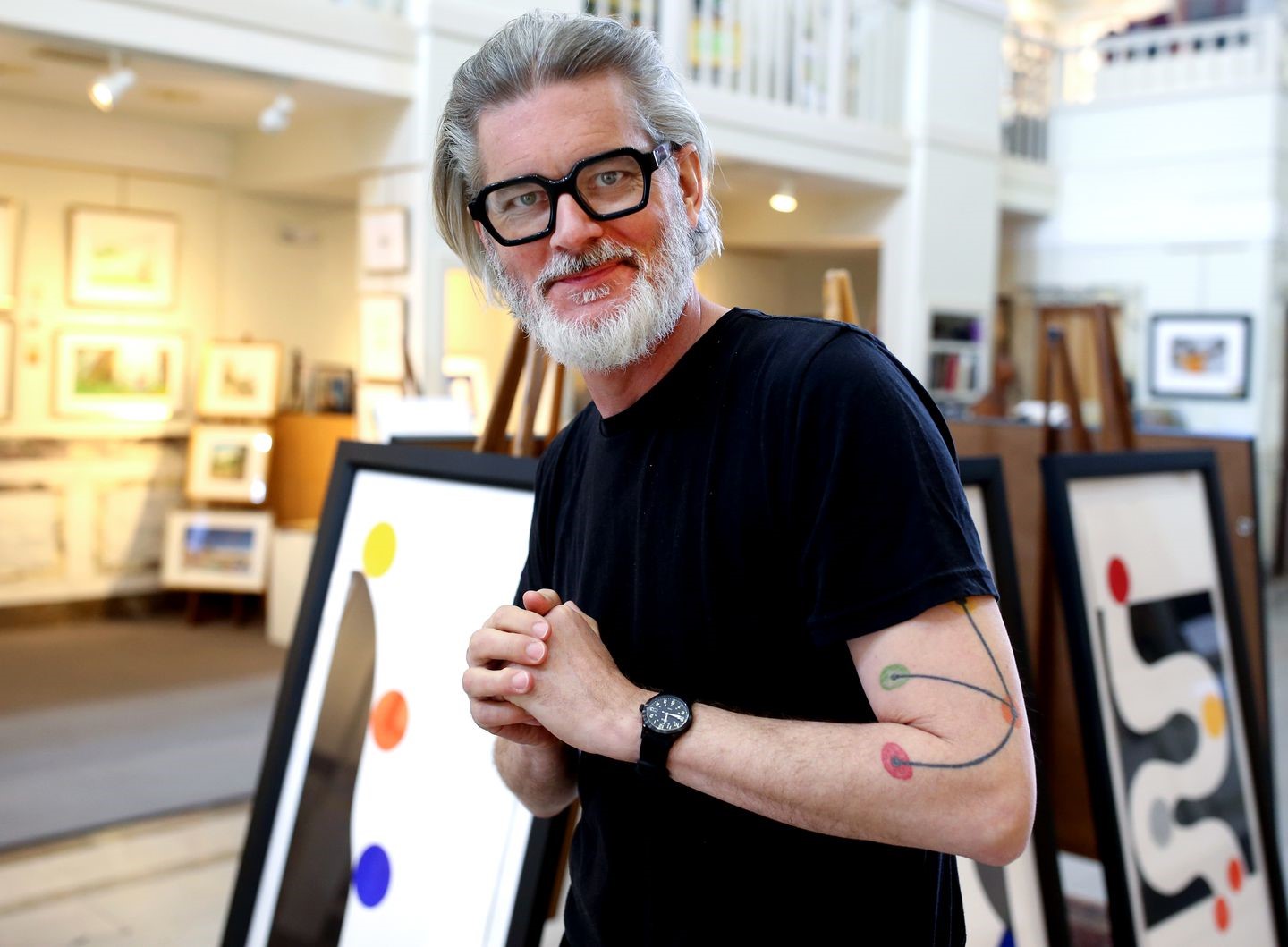
Children’s book author and illustrator Mo Willems, photographed at the R. Michelson Galleries in Northampton.JONATHAN WIGGS/GLOBE STAFF
NORTHAMPTON — Mo Willems likes bad ideas. Casting a pigeon as the star of a children’s book? “A terrible idea,” according to Willems, who did exactly that. But there’s no denying it’s an original one. “Everybody already has bunnies and bears and sweet little things,” he said. “Nobody had a pigeon.”
Willems’s pigeon — known simply as The Pigeon — made his official debut in 2003′s “Don’t Let the Pigeon Drive the Bus!” You know The Pigeon even if you don’t: He’s the pushy, self-preoccupied creature in all of us, a feathered id. The Pigeon wants (a puppy), needs (a bath, but doesn’t want to take one), and pleads (to drive a bus) through the books that bear his name.
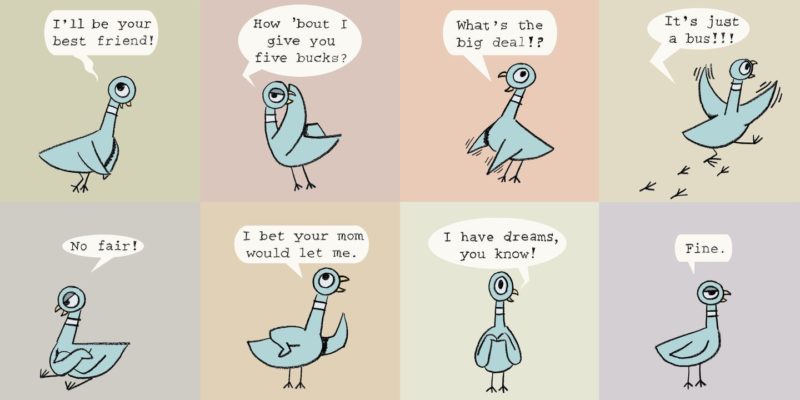
Illustration from “Don’t Let the Pigeon Drive the Bus!” ART © MO WILLEMS
This year, The Pigeon turns 20, and Willems is marking the occasion with “Don’t Let the Pigeon Drive the Bus! 20th Anniversary Edition” and a new book for adults, “Be the Bus: The Lost & Profound Wisdom of The Pigeon,” a collection of “Pigeon-isms” that the blue bird shares in his own voice, “as told to” Willems. “The Pigeon was really angry to discover that a) he’s been in books for 20 years, and b) that people are laughing at him,” he said.
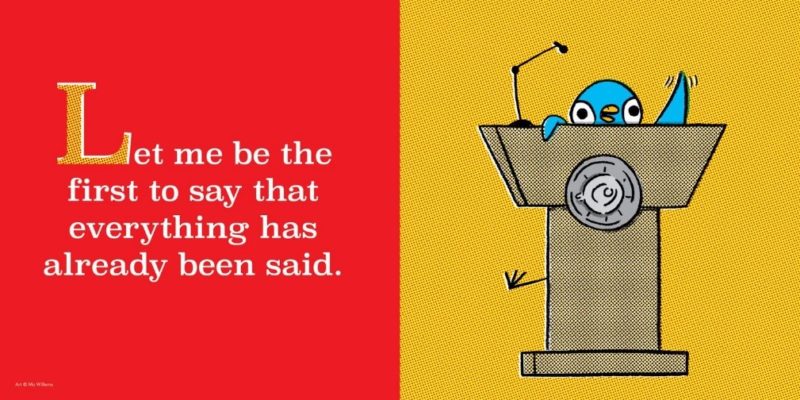
Illustration from “Be the Bus: The Lost & Profound Wisdom of The Pigeon.” ART © MO WILLEMS
Willems, 55, kicked off this month appearing on “The Tonight Show Starring Jimmy Fallon,” where he taught the host and studio audience how to draw The Pigeon using the letters of his first name: “M” (for the beak) and “O” (for the head and eye).
But before that, he sat at a table in the R. Michelson Galleries in Northampton, where he lives with his wife, Cher Willems, the chief creative officer of The Mo Willems Studio. (She is also a potter.) He wore blue jeans, green Doc Martens, and a black T-shirt, and on his left arm was a tattoo of colorful, connected dots — inspired by “We Are All Connected,” a public art playscape he created in Washington, D.C., with hundreds of community members on the REACH Plaza at the Kennedy Center, where he was the inaugural artist-in-residence.
At his elbow was a copy of his book “Don’t Pigeonhole Me: Two Decades of the Mo Willems Sketchbook,” a collection of the annual sketchbooks he’s given out to friends and clients over the years. (This year’s theme: “wrecked tangles: basic shapes under too much pressure,” showing everything from an octagon to an oval bent out of shape.)
“All of my characters are planted in an idea garden, which is a notebook, and they all grow slowly. And over time, drawing at the dinner table or in notebooks, they finally come to fruition,” he explained.
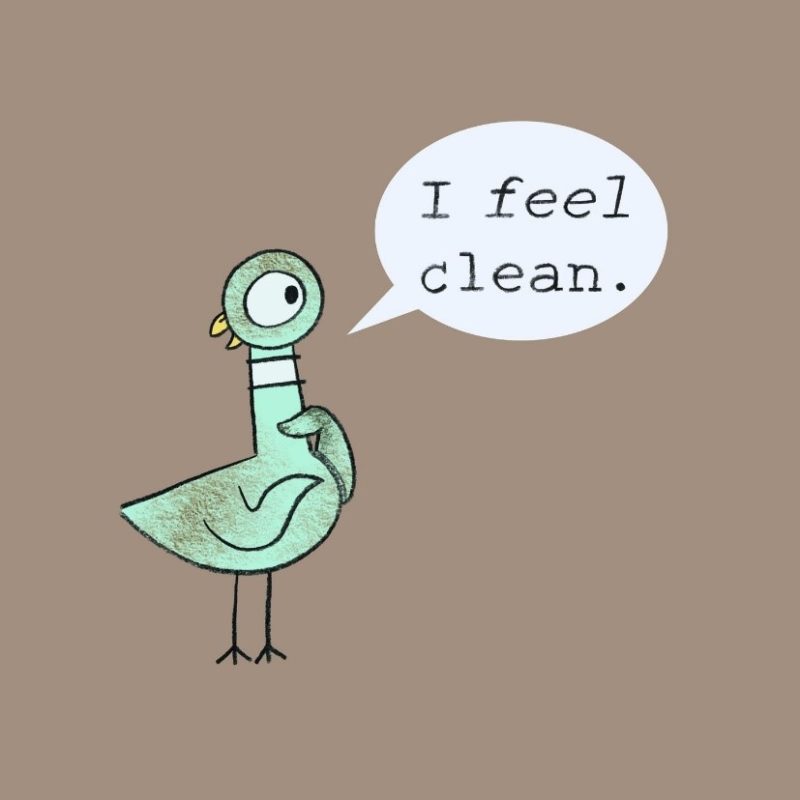
Illustration from “The Pigeon Needs a Bath!” ART © MO WILLEMS
The Pigeon was different. He came out of nowhere, demanding attention. “I was going to write the great American children’s book,” said Willems, “and The Pigeon showed up in one of my notebooks and said, ‘Why are you writing these terrible books? You should write about me.’”
So he did — telling the story of a city bird desperate to drive a bus — in sketchbook form. At the time, Mo and Cher were on a monthlong sabbatical in Oxford, England. Back in New York City, Cher worked part time as a school librarian, and after reading the sketchbook to kids, she told Mo it was a picture book and convinced him to try and sell it. He estimates that “12 billion publishers” passed before one editor gave it a shot, remarking that the book was “unusual, but ‘unusual’ is not a pejorative.”
From the start, he knew he wanted the design of The Pigeon to be simple: so simple that “a 5-year-old can reasonably draw the picture,” he said. When he was 5, Willems wrote to “Peanuts” creator Charles Schulz to ask, “Can I have your job when you’re dead?”. “I loved that Charlie Brown could be drawn by anybody,” he said. “I loved that Charlie Brown had it worse than me.”
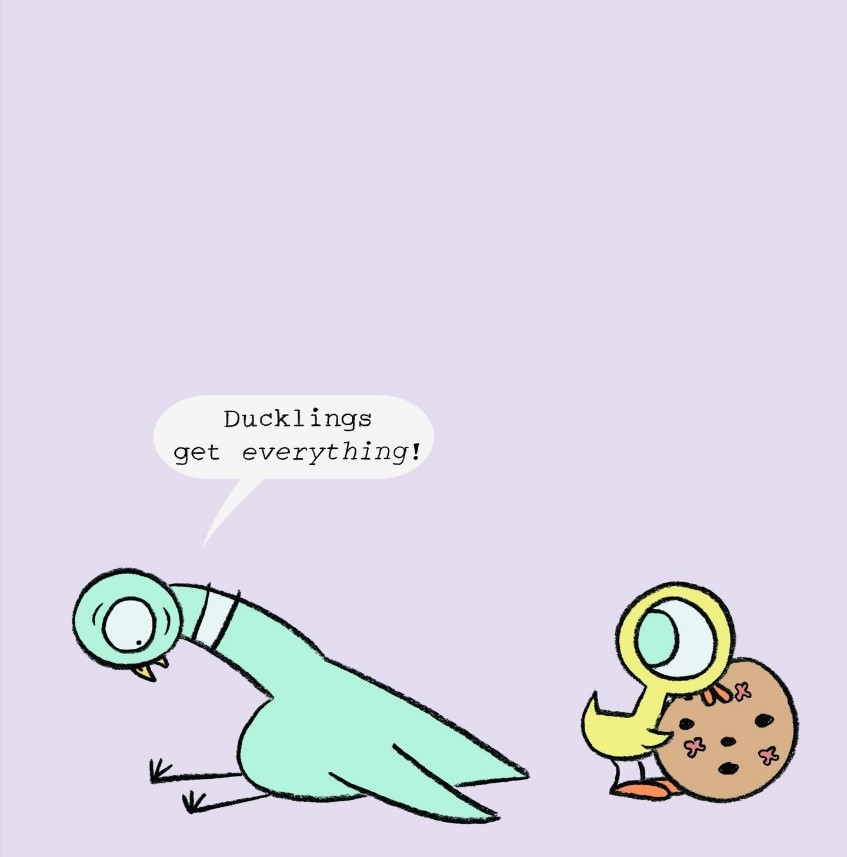 Illustration from “The Duckling Gets a Cookie!?” ART © MO WILLEMS
Illustration from “The Duckling Gets a Cookie!?” ART © MO WILLEMS
Growing up in New Orleans and later attending New York University, Willems was always writing and drawing. He’d worked as a writer and animator for television, including “Sesame Street,” but he’d never published a children’s book. “I looked at the book differently than maybe some other people. I didn’t think about pages, I thought about surfaces,” he recalled, adding that he saw the book itself as “a physical sculpture that is on a kid’s lap.”
Willems reworked “Don’t Let the Pigeon Drive the Bus!,” expecting it would go directly to remainders. Instead, it went on to become a New York Times bestseller, earn a Caldecott Honor, and embed itself in the shelves and psyches of kids who are now grown.
In 2004, Willems published “Knuffle Bunny: A Cautionary Tale,” about a toddler, Trixie (named after Mo and Cher’s son, Trix), who loses a beloved stuffie on a trip to the laundromat but doesn’t yet have the words to let Dad know, instead crying: “AGGLE FLAGGLE KLABBLE!”
Then came more new characters in 2007′s “Today I Will Fly!,” about a pig who tries and tries to fly — with some help from her friends — but can’t. The Elephant & Piggie books might seem to be about friendship, Willems said, “but in fact, they’re about repairing friendship . . . repairing accidental misunderstandings, finding different ways to show concern, and course correcting.”
His books deal with big feelings — frustration, anxiety, disappointment — that are baked into simple stories. But he often stresses that “simple and easy are opposites,” said Tracey Keevan, his editor for over a decade, noting that behind the books is “a tremendous amount of thinking.”
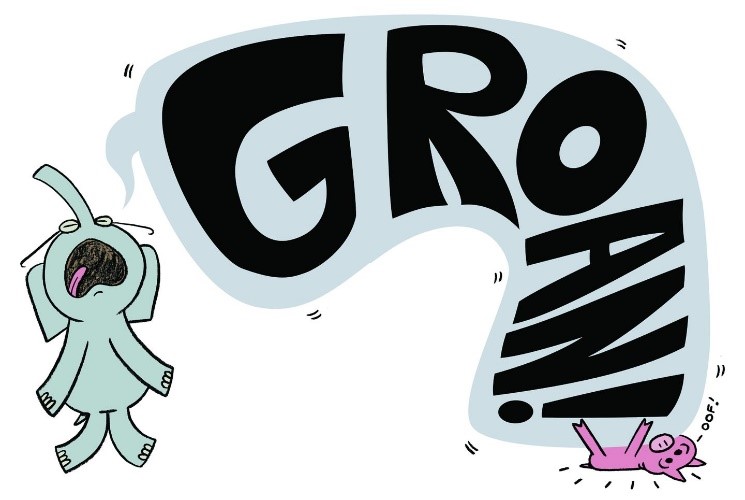
Illustration from “Waiting Is Not Easy! An ELEPHANT & PIGGIE book.” ART © MO WILLEMS
And while he’s often compared to Theodor Seuss Geisel, a.k.a. Dr. Seuss, that’s “a limited historical view,” said Alexandra Kennedy, executive director of The Eric Carle Museum of Picture Book Art in Amherst. “He’s not ‘the Dr. Seuss of our generation.’ He is Mo Willems,” she said. “What makes him so interesting is how original he is, just like Dr. Seuss was original . . . you know, Maurice Sendak felt utterly original. Eric Carle felt utterly original. I see [Willems] as another person who has broken through creatively in the picture-book world and made something new and important.”
She added, “Mo really just came on the scene so strongly with his pure Mo-ness.”
In 2008, the Willemses moved to the Pioneer Valley, joining a fertile community of children’s book authors, including Carle and Norton Juster (both of whom died in 2021), Jane Yolen, and many others. “The great thing about picture-book authors, and it is true in very few forms of entertainment right now, is that every one of them is themselves in their work,” Willems said. “And so in a weird way, it is hard to feel competitive, and it is easy to feel part of a community, because we are all being ourselves. We’re not all drawing chickens. It’s not like a chicken-off, and who has the best chicken? We’re all expressing these questions — you know, a book is a letter that you’re writing to yourself that you don’t know the answer to, that you want somebody else to pay for.”

Illustration from “The Pigeon Will Ride the Roller Coaster!” ART © MO WILLEMS
Many of Willems’s characters experience failure and grow from it, an arc he knows well. “I mean, look, there are a lot of failures,” he said. He recalled an animated television series he created for Cartoon Network when he was in his early 30s. It was called “Sheep in the Big City,” and it was about a nonverbal sheep wanted by a top-secret military organization for a sheep-powered ray gun — “and he was the only sheep that fit in it,” Willems said. “So, that show was very unpopular. And canceled very quickly.”
What did he learn from the experience? “You can survive failure,” Willems said, and laughed. Looking back, he added, “I just felt too pressured, I was working too hard trying to keep the team together, and I think some of the joy of the project didn’t make it to the screen because I wasn’t able to translate that. So when I got the opportunity to have a career in books, I was very conscious of the idea that I should enjoy all of the processes as much as I could.”
Those processes now span a multitude of disciplines, including opera. Later this month at the Kennedy Center, Willems and soprano Renée Fleming will present “The Ice Cream Truck Is Broken! & Other Emotional Arias,” featuring famous arias with his “Mo-ified lyrics”. “I know very precious little about opera, but I found these commonalities between opera and picture books,” Willems said. “They are both about big emotions.”
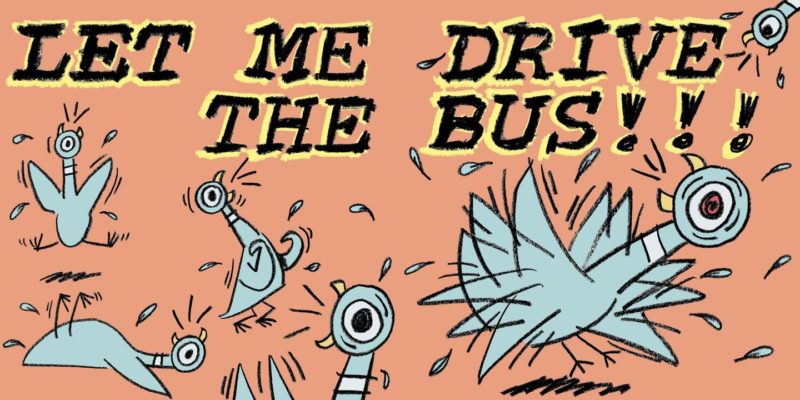
Illustration from “Don’t Let the Pigeon Drive the Bus!” ART © MO WILLEMS
As he sees it, we could all learn a lot from the way children approach the world.
“I like to be terrified because that’s how you learn,” Willems said. “I mean, going out and doing something you don’t know anything about, and giving it your all, is what a kindergartner would call Tuesday morning.”